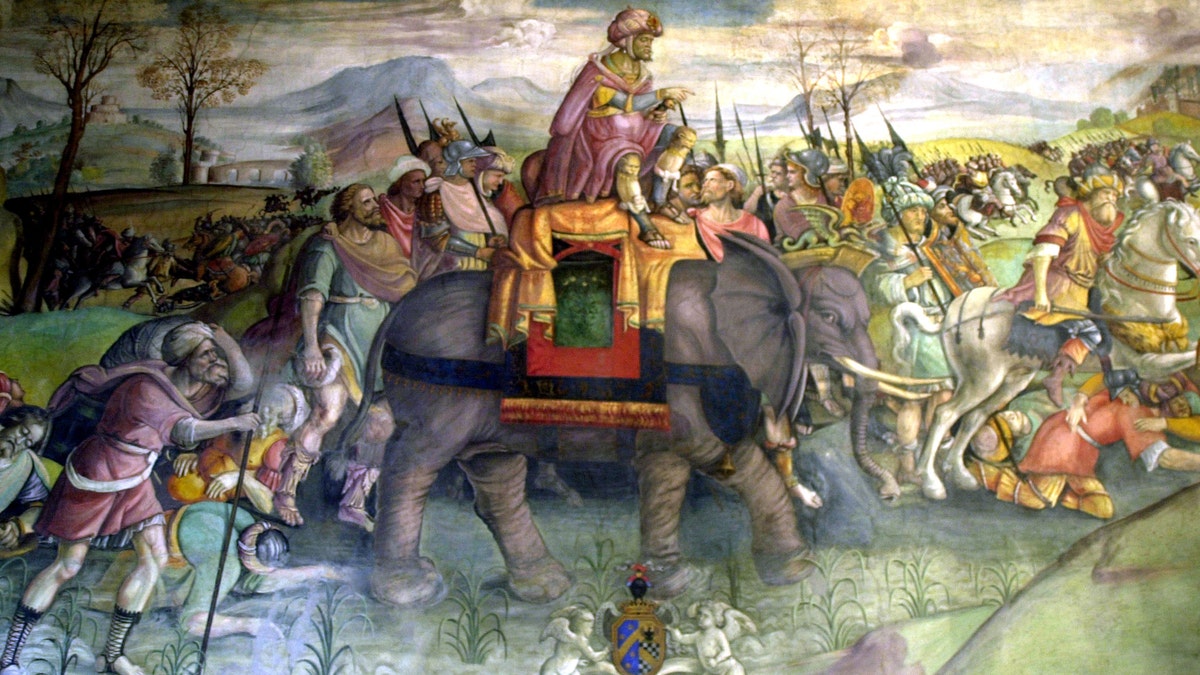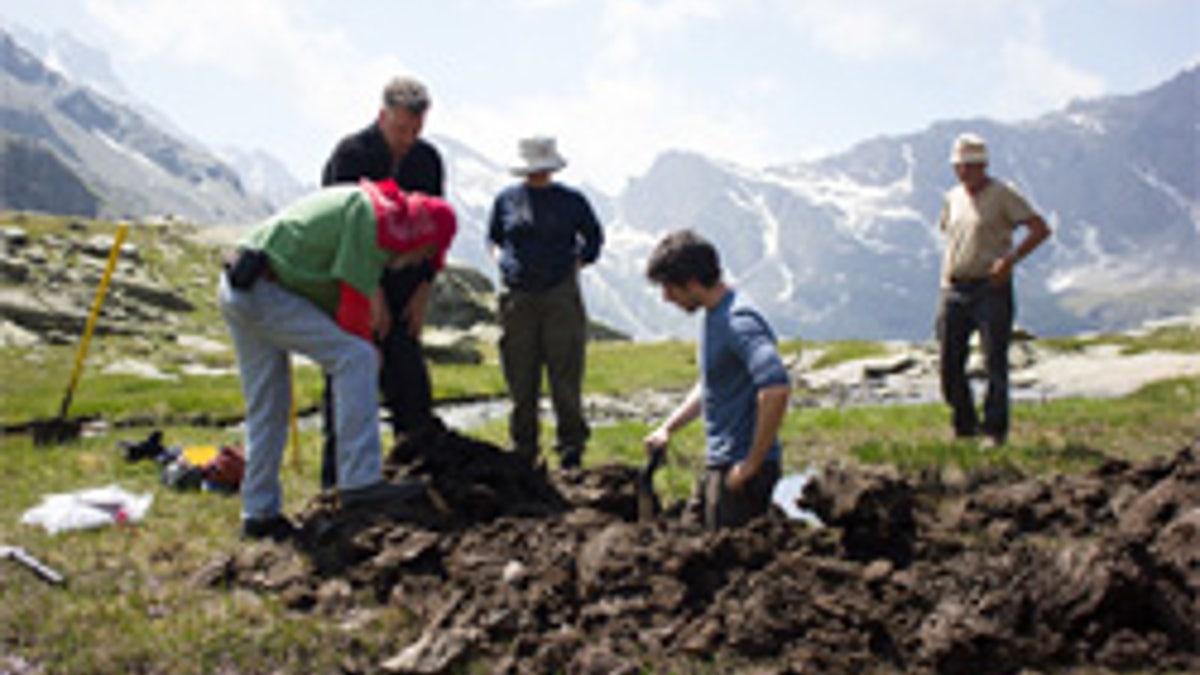
Detail of the fresco on Hannibal, Hannibal riding his elephant, Italy, Rome, Capitole museum. (Photo by Photo12/UIG/Getty Images)
Scientists may have unlocked one of the great puzzles of the ancient world, analyzing microbes from horse manure to discover where Hannibal and his army crossed the Alps.
The Carthaginian general famously led an army of 30,000 men, 37 elephants and more than 15,000 horses and mules to invade Italy. The audacious trek across the Alps occurred during the second Punic War, which lasted from 218 B.C. to 201 B.C.
However, Hannibal’s exact route across the Alps has been hotly debated by historians. Now, an international team of scientists have unearthed fascinating evidence from the remote Col de Traversette pass on the border between France and Italy.
Related: New Viking site in North America? Experts eye satellite data for potential discovery
Harnessing radiocarbon dating, microbial metagenome analysis, environmental chemistry and pollen analysis, the experts have shown that a “mass animal deposition” event occurred near the Col de Traversette in 218 B.C.

The expedition to the Col de Traversette site (Queen's University, Belfast)
“You’re looking at a lot of horses -- as anybody that knows anything about horses will tell you, when horses drink, they have to defecate,” Chris Allen, senior lecturer in environmental microbiology at Queen’s University, Belfast, told FoxNews.com, explaining that scientists studied 3 feet of sediment beneath a large mire, or pond, for evidence of the horses’ manure.
More than 70 percent of the microbes in horse manure are from a group known as Clostridia that can survive in soil for thousands of years. Allen told FoxNews.com that scientists found a remarkable increase in the number and relative abundance of the bacteria in the sediment, suggesting that Hannibal’s army crossed the Alps at that specific point.
Related: Emperor Hadrian's villa yields posh, arty apartment
“Normally, we see these bacteria at quite low levels within soil, but, in this particular case, we found very high relative numbers,” he said. Scientists also noticed an increase in the number of bile salts that come from the gut, as well as a sharp change in the sediment’s pollen record. “The pollen analysis showed us that there was definitely a significant change in the deposition characteristics at the point Hannibal crossed the Alps,” explained Allen.
The microbiologist acknowledges that researchers were fortunate to find the mire, which dated back 8,000 years. Other mires in the area were less than 2,000 years old, so were unable to yield any information on Hannibal’s army.
At this stage, scientists are not sure how much Hannibal’s elephants have contributed to the evidence. “Basically we are looking at there likely being a lot more horse manure than elephant,” Allen explained. “But we don’t know yet.”
Related: 2,500-year old slab unearthed, offers glimpse into the ancient Etruscan world
The project was a collaboration between Queen’s University, Toronto’s York University, Ireland’s Dublin City University, Estonia’s Tartu University and researchers in Canada, Portugal, France and the U.S. Professor Bill Mahaney of York University led the expedition to the Col de Traversette, with University of Toronto Associate Professor Sarah Finkelstein providing pollen analysis. Arizona-based radio carbon dating expert Alan West also participated.
The scientists’ findings, which are published in the journal Archaeometry, may even boost our understanding of modern bacteria, according to Allen. “There’s not a lot that we know about Clostridia over the last 2,000 years,” he said. “We hope that some of the information that we get from this may tell us about how these organisms have changed in the last 2,000 years and help us with medical discoveries.”
Follow James Rogers on Twitter @jamesjrogers




















